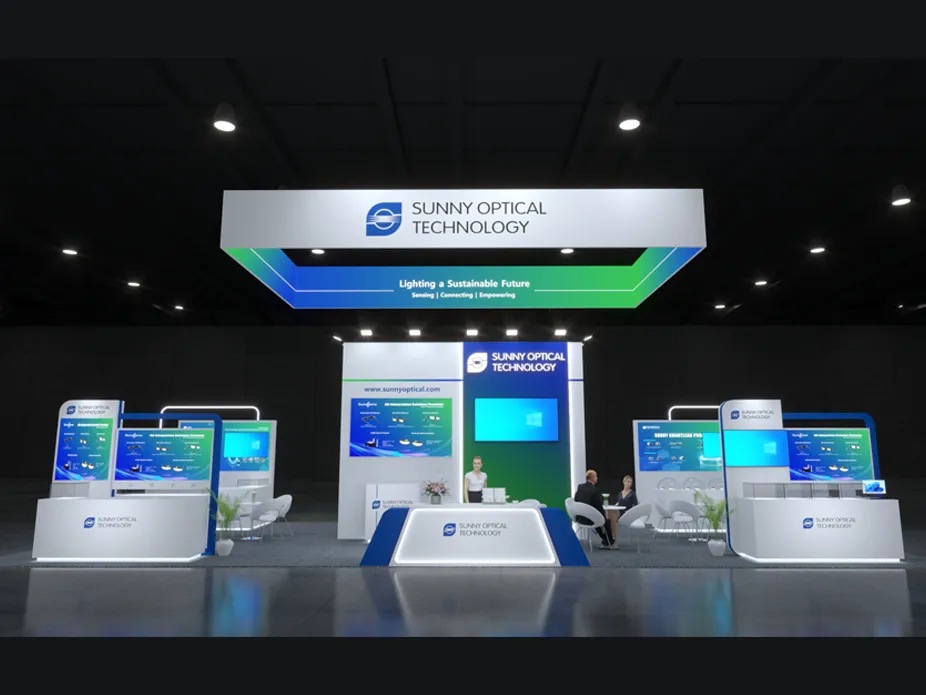The automotive lens is like the eye of the car. After the image is collected by the lens, the photosensitive component circuit and control component inside the lens system process the image and convert it into a digital signal that can be processed by the computer, and then the image information is processed on the vision processing chip through algorithms. After processing, extracting valid information, it enters the decision-making layer for decision-making and judgment, so as to perceive images of lanes, vehicles, pedestrians and traffic signs on the road, so the automotive lens will also benefit from the rapid penetration of smart cars and usher in heavy demand.
1. Higher requirements for adaptability to temperature ranges and extreme and complex environments. For example, the temperature range of automotive lenses is generally -40°C ~ 80°C.
2. The pixel requirements are not so high. The requirements for pixels of automotive lenses are far less than that of mobile phones with tens of millions of pixels. At present, mainstream products are generally still at the 1-2 million pixel level. In the future, high-end automotive lenses are expected to be upgraded to 8 million pixels.
3. Smaller power consumption. The power of the automotive lens should not be too large, generally below 10W.
There are many classifications of automotive lenses. According to their installation positions on autonomous vehicles, automotive lenses can be divided into front view, rear view, surround view, side view and other types.
The front-view camera requires a larger viewing distance, generally using a viewing angle range of 40-70 degrees, and the viewing distance is generally more than 120 meters, covering the most ADAS functions. After different processing of the acquired images, LKA can be realized. Lane Keeping, LCA Lane Change Assist, EAB Electronic Brake Assist, TSP Traffic Sign Recognition, LDW Lane Departure Warning and many other functions, the unit price is also the most expensive.
In order to solve the problem of the blind spot of the front-view camera, it is generally necessary to install the surround-view and side-view cameras to achieve a panoramic view and enhance the perception of the road and pedestrians through the stitching of images.
The rear-view camera is used to detect the situation behind the car body, and the functions that can be realized include PA parking assistance, SVP panoramic parking, etc. For surround view and rear view, a wide-angle lens of more than 135 degrees is generally used, and the detection distance is within 10 meters.
According to the different number of automotive lenses, cameras can be divided into monocular, binocular and multi-eye cameras.
A monocular camera is a single camera in a fixed location, while a binocular/multi-camera is a set of cameras that work together in a fixed location.
At present, the monocular camera solution is relatively mature, and the cost is low, and it is widely installed in various types of vehicles. The disadvantage of the monocular camera is that it cannot obtain the depth of field, and can only identify what object is in front of it, but cannot identify how far the object is. At the same time, because the vehicle-mounted monocular camera is difficult to zoom frequently, it is difficult for the vision system to collect environmental images at different focal lengths.
Binocular/multi-eye cameras can use dual cameras to image the same target from different angles, so as to obtain parallax information, calculate target distance, and measure more accurately, but the cost is higher than that of monocular cameras. Common Vision Solutions. Since the multi-eye scheme requires a huge database to train the model to realize target recognition, the development of the algorithm is very difficult, and the algorithm complexity is geometrically increased compared to the monocular.
According to different materials, optical lenses are mainly divided into glass and plastic.
Glass spherical lens camera has better performance parameters and have advantages in light transmittance, accuracy and stability, but the cost is relatively high. Plastic lenses have the advantages of light weight and impact resistance. mass production.

【Exhibition Invitation】Visit us at CES 2026!
2025-12-10

Sunny Optical Gets Group LiDAR Standard Approved, Using Innovative Optical Solutions to Unlock Key Step in Mass Production
2025-11-25
![[Exhibition Invitation] Sunny Automotive Optech Invites You to the 26th China International Optoelectronic Exposition (CIOE 2025) [Exhibition Invitation] Sunny Automotive Optech Invites You to the 26th China International Optoelectronic Exposition (CIOE 2025)](/uploads/image/20250908/首图7.webp)
[Exhibition Invitation] Sunny Automotive Optech Invites You to the 26th China International Optoelectronic Exposition (CIOE 2025)
2025-09-08

Inquiry
Excellent Customer Service Ability
Key customer manager mechanism
Oversea supporting points
Excellent Process Control Ability
Fully automated production
DMC traceability management
VDA6.3 / IATF16949 verifications
Excellent R&D Ability
Advanced technology new product development cooperation
Cost-effective optical solution proposal based on customer needs
Ecosystem resource integration